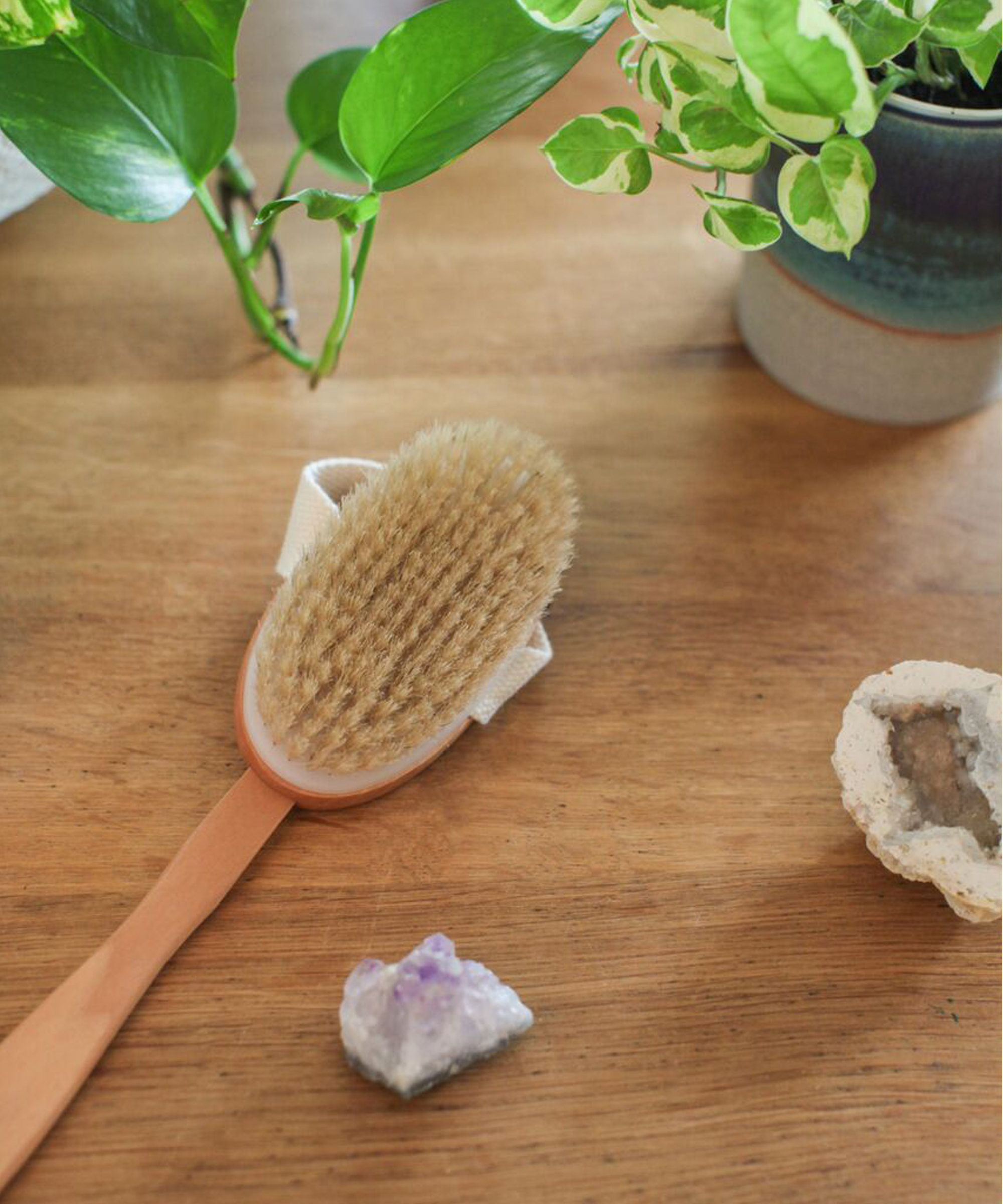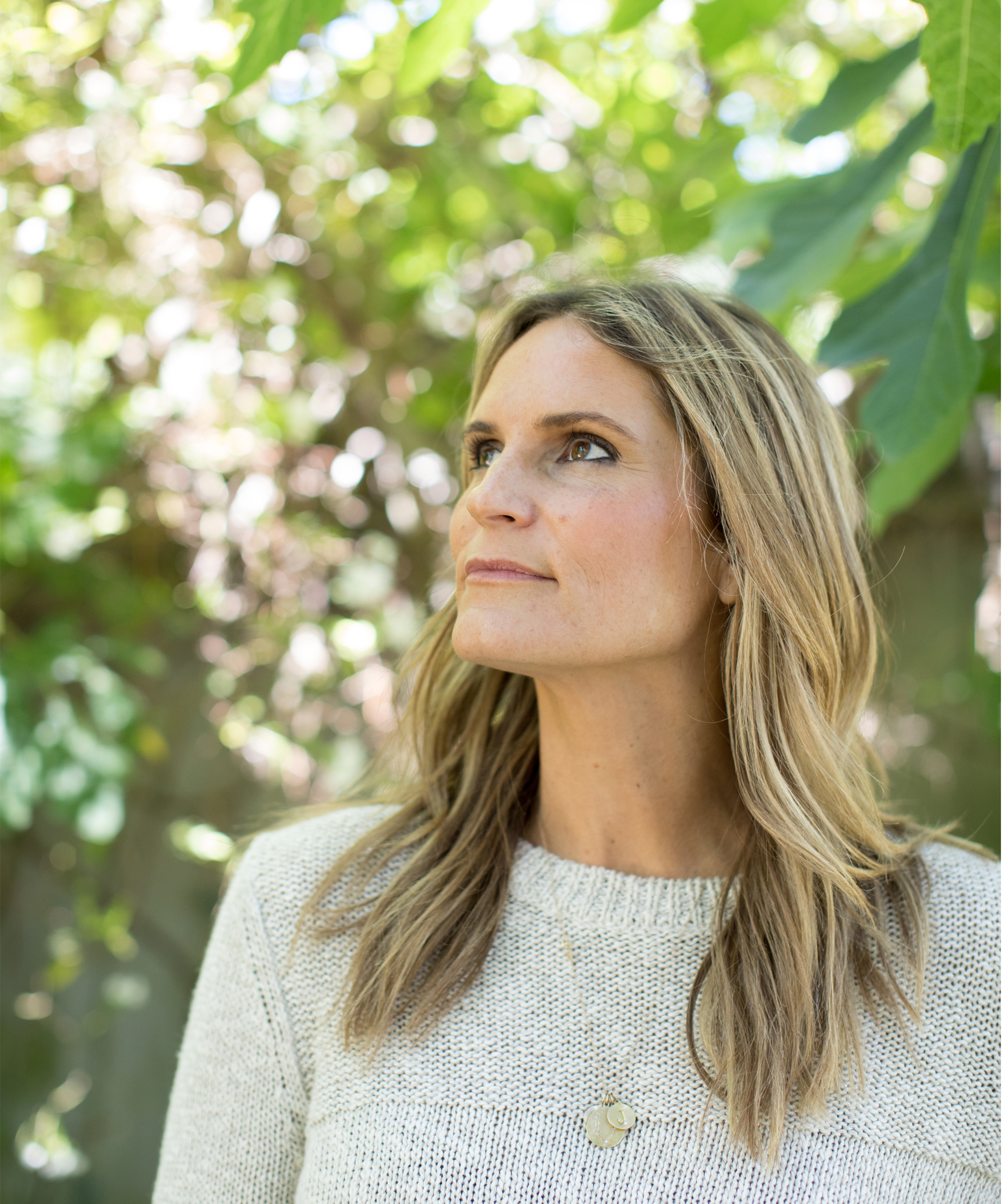This Wellness Practice Will Change Everything
Translation missing: en.blogs.article.author_on_date_html
Wellness
This Wellness Practice Will Change Everything
July 8, 2018
Lisa Gainsley and Lauren Roxburgh have a lot in common. Lisa is a Certified Lymphedema Therapist with a double certification in Complete Decongestive Therapy and Manual Lymphatic Drainage, while Lauren is an alignment, fascia, and movement specialist, author of book Taller, Slimmer, Younger, and the creator of the alignment method. We sat down with these lymphatic drainage experts to talk about how fascia connects more than just your muscles and how flushing your lymph system can prolong your life.

This Wellness Practice Will Change Everything
Shop the Story
Rip & Tan: What does the lymphatic system do and why is it important to the body’s functions?
Lisa Gainsley: The lymphatic system is our first line of defense against disease and foreign particles. It helps circulate immune cells throughout our bodies and is integral to the immune system. The lymphatic system runs like a network of rivers, similar to the bloodstream. It absorbs, transports and filters our body’s waste through the lymph nodes. Lymph nodes, which are located mostly located in the neck, armpits, spleen, abdomen, top of the thigh, and behind the knees and elbows, contain white blood cells, macrophages and lymphocytes that act as detectors that signal to the immune system to destroy unwanted invaders. The nodes filter out toxic debris, then the lymph fluid enters to the bloodstream. I often refer to it as the body’s Great Recycling System. Excess waste accumulated in the tissues move through a network of pathways, vessels and ducts, like strands of pearls on a necklace cleaning out the body’s waste. The lymph system doesn’t have a central pump to move the fluid like the way the heart pumps the blood. Lymph depends on intrinsic muscle motility to move the fluid. Exercise and manual lymph drainage (MLD) increases the body’s ability to pump lymph fluid towards their drain sites. By enhancing lymphatic flow, you can directly improve your immune response to disease and other ailments. Eliminating excess waste removes congestion and reduces inflammation in the body.
Rip & Tan: What is Lymphedema?
Lisa Gainsley: Lymphedema is an abnormal accumulation of protein-rich fluid, which is the result of a malfunctioning lymphatic system. This swelling typically occurs in the arms or legs but can occur in other body parts as well. There are two types of lymphedema, primary and secondary. Primary lymphedema is the hereditary result of a malformed lymphatic system. Symptoms can be present at birth, during puberty or later in life without any obvious cause.
Secondary lymphedema is much more common and occurs when the lymphatic system is damaged due to factors such as side effects of cancer treatment, radiation, lymph node removal, infections, scarring and trauma. Filariasis is another leading cause of lymphedema. Lymphatic filariasis occurs mainly in tropical climates where parasitic worms are transmitted to humans, damaging the lymphatic system.
Symptoms of lymphedema include achiness, heaviness or swelling of a limb. People often feel tingling, numbness and limited range of motion. Chronic fluid accumulation in an area can lead to discoloration of the skin, or weeping wounds that don’t heal properly. The lymphatic system will swell many times over before symptoms are visible to the eye. There is no current cure for lymphedema, but with proper treatment it can be managed. Early detection and knowledge of signs and symptoms can help prevent lymphedema from progressing. Clinical trials and micro-surgeries are advancing treatment options to improve quality of life for those afflicted with lymphedema.


Rip & Tan: Can you describe the process of Manual Lymphatic Drainage (MLD) and how it heals the body?
Lisa Gainsley: MLD is a therapeutic modality based on the strokes and techniques developed by Dr. Emil Vodder in Europe in the 1930’s. It’s designed to optimize the lymphatic and immune system by reducing metabolic waste and accumulated toxins from the body. An MLD therapist uses specific gentle, rhythmic strokes that mimic the action of the lymphatic system. The precise pressure and direction pumps like a wave through the entire lymph system to the deepest layers of the body, stimulating lymph vessel contraction which moves fluid towards lymph nodes. As we discussed earlier, the white blood cells inside lymph nodes then filter out the body’s toxins. While the gentle touch of MLD is soothing and relaxing, it is also deeply therapeutic. MLD has a number of important functions, which include distributing immune cells throughout the body to defend against disease, ridding the body of excess proteins and toxins and helping to repair damage to injured tissues. Regular lymphatic treatments reduce inflammation and bloating. MLD accelerates recovery time from surgeries and injury, improve the appearance of skin, scar tissue and often cellulite. It’s a relaxing treatment that calms your nervous system, promotes healing and feels rejuvenating.
Rip & Tan: Who would you recommend for this treatment and how can it prevent or treat symptoms?
Lisa Gainsley: Everyone can benefit from lymphatic drainage. We all have inflammation in our bodies. Studies show inflammation is at the root of disease. Lymphatic treatments cleanse the body and boost the immune system. The lymphatic system is continuously flushing toxins from the body. We are only using 10% of our lymph system- that means we have a 90% functional reserve that can be enhanced to help the body flush out impurities and pathogens more efficiently.
Some people seek MLD because they’ve heard of its health benefits. There are also those who come because their stress, digestion, hormonal in-balances, surgical procedures or other symptoms cause inflammatory responses in their bodies. Treatments can benefit the symptoms of acne, arthritis, athletic injury, bloating, indigestion, cancer treatment side effects, as well as recovery from radiation, mastectomies, lumpectomies, lymph node removal, neuropathy cellulite appearance, chronic fatigue, eczema, lymphatic pooling (swelling) in the ankles and feet, pre- & post-surgical procedures including face-lifts, rhinoplasty, brow lifts, chin tucks, tummy tucks and breast implants. It’s important to note that treatments are not meant to be a one-time fix. Continued maintenance of the lymph system will have a cumulative effect on the body- and people seeking treatments should understand that we recommend several sessions in order to reap the benefits.
Rip & Tan: Are there any at-home remedies one can employ to reduce inflammation? When should one see a doctor?
Lisa Gainsley: First of all, I recommend seeing a doctor if you feel a lump. Lymph nodes tend to swell when the body is fighting an infection, but it’s important to see a physician if the lump persists to rule out a larger problem.
Here are some quick tips to better care for your lymphatic system:
Hydrate: Drinking water will promote lymphatic flow. Hydrating will bathe and nourish your cells and improve the appearance of your skin.
Exercise: Lymph fluid gets pumped when we move our bodies. Walking in nature, yoga, swimming, jumping on a trampoline or rebounder are all great for the lymph system as they increase the return rate of lymph fluid towards the heart. Inversions (going upside down) are also beneficial for the lymph system.
Proper Skin & Nail Care: Use non-toxic lotions so you don’t place a larger burden on the lymph system to filter out more chemicals. For people with lymphedema, it’s important to keep the skin hydrated and avoid dry cracked skin where bacteria can enter and spread infections. If your legs swell on airplanes, or from standing too long. compression stockings will contain inflammation.
Diaphragmatic breathing: Deep belly breathing and laughing helps pump the fluid from the lower half of our bodies up the thoracic duct. You can practice deep belly breathing at home. Lie down so you’re comfortable. Place your hands on your belly. Inhale and balloon your breath into your hands. On your exhale, let your belly recede back down. Repeat this a few times and feel how relaxing your whole body becomes.
Lymphatic self-massage: Learning how to perform lymphatic drainage on yourself is a great way to give your immune system a boost. I host salons and seminars if anyone is interested we can put you on our newsletter for upcoming events.
Rest: Getting proper sleep promotes healing. We are often in the sympathetic “fight or flight” dynamic which is stressful and agitating to our bodies. Calming the nervous system with proper sleep shifts the body into the parasympathetic state where healing occurs.
Dry Brushing: This helps eliminate toxic build up on the surface of the skin and reduces the lymphatic load. Try it before your shower so you can rinse off any dead cells afterwards. Purchase a dry brush with natural bristles. Brush towards your heart where your lymph fluid will ultimately return to your bloodstream. Dry brushing 2-3 times a week is plenty. If you have had lymph nodes removed, radiated skin or open wounds please consult with a lymphedema therapist before you begin.



Rip & Tan: We hear a lot about “eliminating toxins.” What are the body’s primary toxins and stressors that the body doesn’t take care of on its own?
Lauren Roxburgh: We are exposed to thousands of toxins daily from pesticides, household cleaning products, beauty products, processed foods, plastics, chemically-based foods and other environmental toxins in the air. Efficient functioning of the lymph system is essential to eliminate these excess wastes in our modern-day bodies and help the body function optimally. Stress, sitting too much, lack of activity, injuries and poor posture also contribute to a sluggish lymphatic system.
Rip & Tan: Can you define some terms for us? What is structural alignment? What is the Fascia?
Lauren Roxburgh: Structural alignment is when the body is in proper posture. It’s about relating to gravity in the most efficient and effortless way. When we are properly aligned, our bodies are lengthened, decompressed, a taller posture is restored, we have a greater ease of movement, we can breathe deeper, we feel more grounded and present, less stressed, excess weight comes off, cellulite is reduced, and we have a feeling of being more at home in our own body and we feel more at peace in our lives too.
Fascia—also known as connective tissue—is a thin layer of tissue that lies under the skin and wraps every muscle in the body and also connects the muscles to the bones.
The lymph system lives within the fascial matrix, so the fascia needs to be supple, hydrated, and flexible to properly move the lymph and flush the body of toxins. In a healthy state, your fascia is smooth, supple, flexible and fluid. But emotional trauma, injuries, inflammation, surgeries, poor posture, repetitive strains or even just the effects of gravity can all cause the fascia to lose its suppleness and resilience, dry up and become thick and tight all of which pulls the body out of alignment, restricts the lymph and allow toxins and tension to be trapped in the system.
The good news is your fascia has amazing self-healing abilities, which is lucky because to get your body into correct alignment you have restore, hydrate and restructure and cleanse your fascia and lymph system. And why is alignment so important? Well, being in correct alignment means your relationship to gravity is more effortless and relaxed, your breathing is more efficient, your organs are not compressed, your glands are working efficiently, your metabolism is fired up, which allows for easier detoxification, weight loss and the ability to keep that weight off. It also helps improve your posture, so you stand taller, handle stress in a more relaxed way, and ultimately not only look but also feel younger.
Rip & Tan: How do you hold space to take care of yourself when so much of your time is dedicated to the healing of others? What do you practice to reduce feeling burnt out or overwhelmed?
Lauren Roxburgh: Listening to my gut and learning to say no to things that don’t feed my soul.
Rip & Tan: Are there any other regiments or treatments you’d recommend in conjunction with foam rolling?
Lauren Roxburgh: Restorative yoga helps move energy and flush your lymph nodes, while salt baths helps relax your tissues and mind. One of my favorite products to use for my nightly salt bath’s is the Herbivore Botanicals – Dead Sea Bath Salts.
Magnesium supplement in powder form helps restore your nervous system and nourish your fascia. I also love cranial sacral therapy, acupuncture, pilates, hiking, and forest bathing.
Rip & Tan: What are your favorite at-home workouts?
Lauren Roxburgh: Foam rolling helps move the lymph and flush out the toxic fluids, improves lymph flow by encouraging deep breathing, smoothes out congestion and inflammation. Rolling also hydrates and heal the dry, thick, dense, brittle and weak connective tissue.
Taking brisk walks helps to move the lymph fluid through the body. The more of a transverse rotation you have while walking, the better your lymph system can flush the upper body, arms, neck and shoulders
For me, the combo of rolling and rebounding is the key to getting the best results. I use the Bellicon rebounder in conjunction with my foam rolling moves each day for a transformative combination. Start with the roller for a few minutes to smooth out the density, congestion, and inflammation and then finish with 10-20 minutes of bouncing on the rebounder for a fully restorative, stress busting, cellulite reducing and detoxifying workout.
Infrared sauna therapy allows the body to sweat while in parasympathetic nervous system mode, so toxins are being sweated out. The circulation and release of toxins, the regeneration of tissues, and the heat all work together to improve lymphatic flow.
Inverted poses that reverse the flow of gravity and twist the body, aiding in lymphatic flow. You can also focus on poses that stretch the hips, since the groin area contains a concentration of lymph nodes.

Photos by Kristine Lo and Morgan Pansing